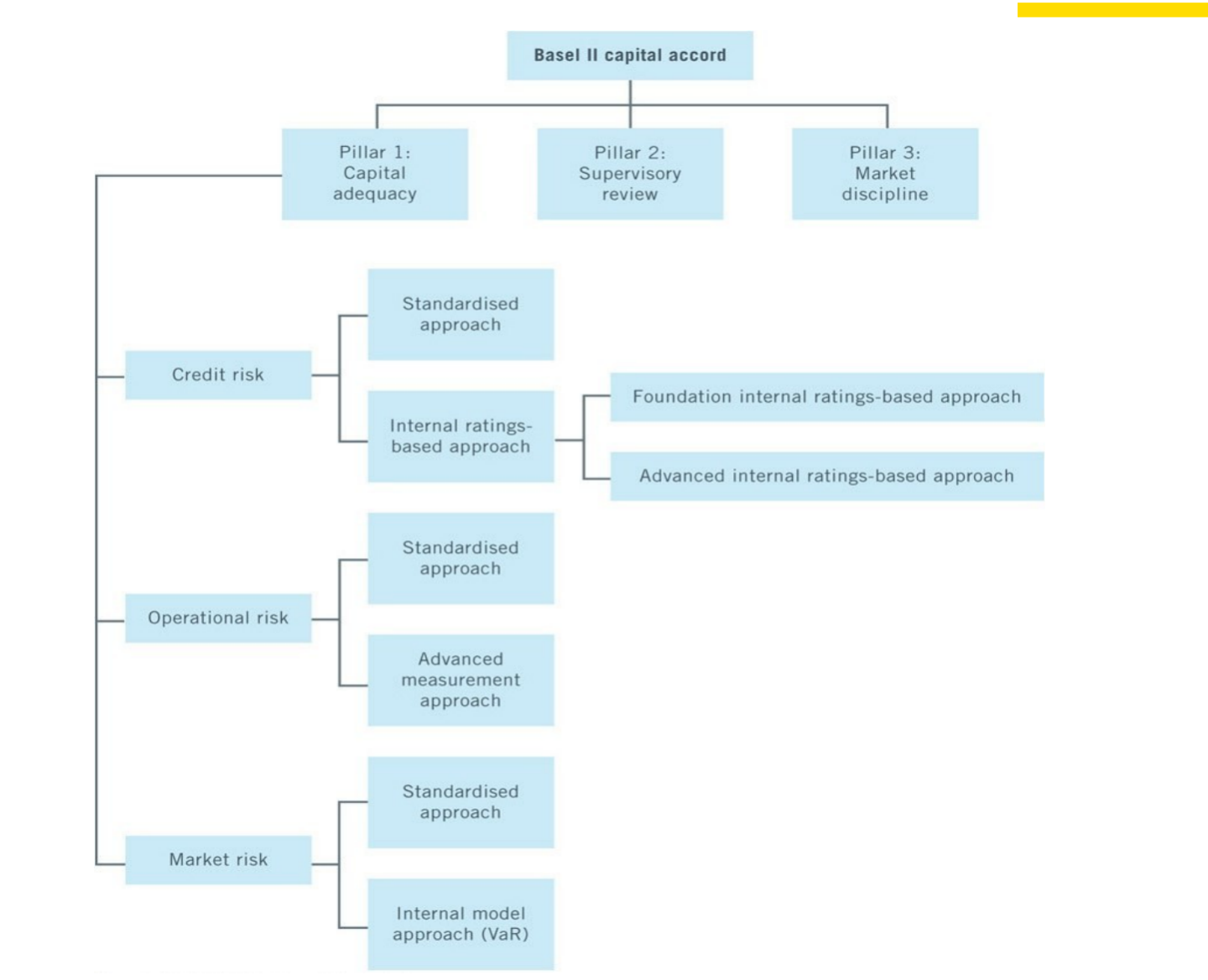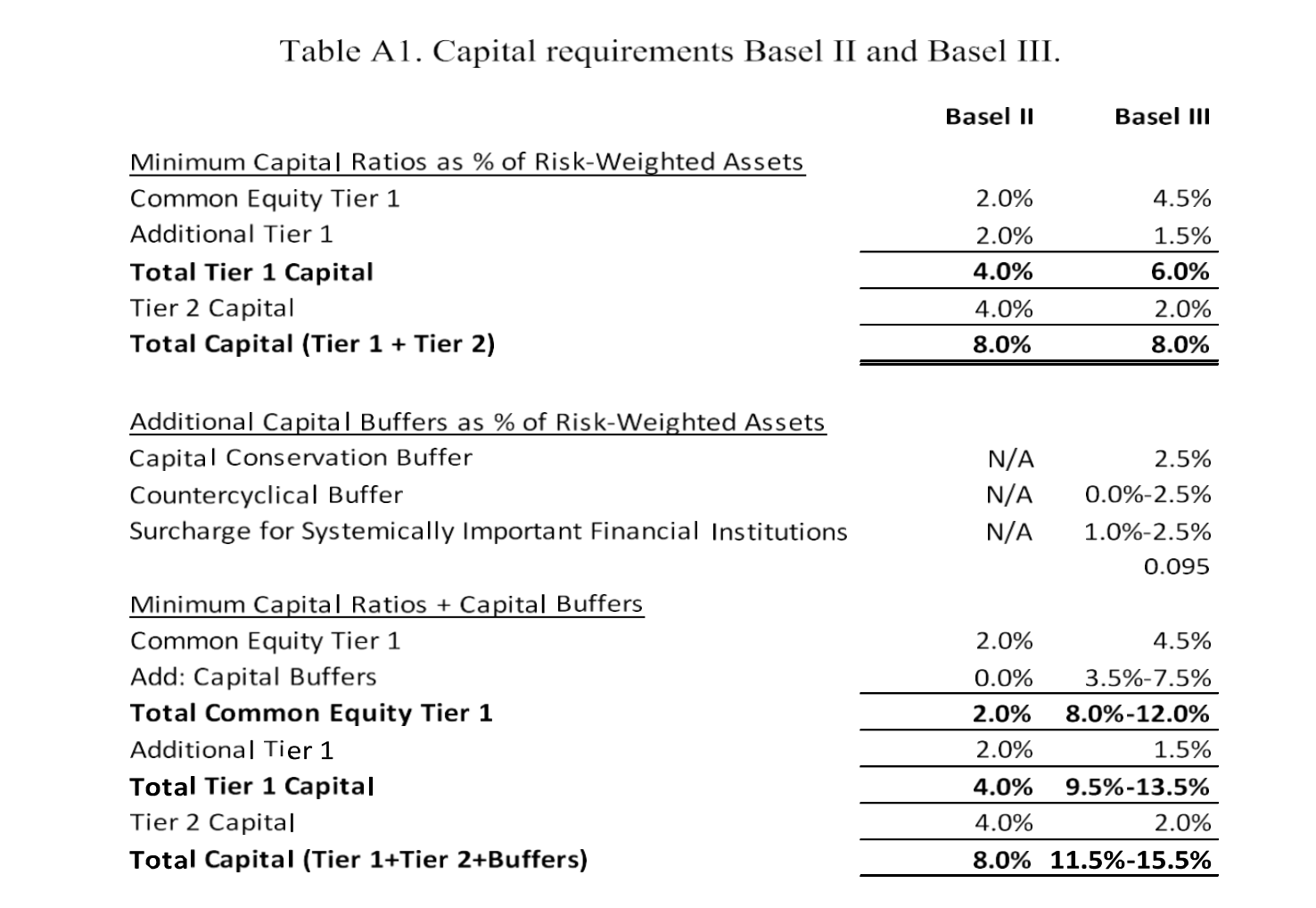FINS 2618 All Weeks
1/76
There's no tags or description
Looks like no tags are added yet.
Name | Mastery | Learn | Test | Matching | Spaced |
|---|
No study sessions yet.
77 Terms
Pre-1980 Banks (Before Deregulation)
Banks were very regulated in their activities and mostly followed an asset management business model. Their loans portfolio had to match with their deposit base therefore they were limited by deposit funding. Further more the rate at which loans were set were fixed.
Post-1980 Banks (After Deregulation)
Banks gained greater flexibility to set variable rates and diversify lending portfolios. This allowed banks to pursue higher-return, riskier lending, including large-scale commercial loans, foreign currency lending, and exposure to new sectors. They were also allowed to use debt as a source of capital to lend out more loans. This also encouraged banks to take on off-balance-sheet activities (e.g., guarantees, derivatives) to generate fee income and manage risks more efficiently.
On balance sheet activities

Current account deposit
daily transaction account
no interest or investment return at all
very liquid
Call Deposit
small interest liquid account
for short-medium term savings
Term Deposit
fixed set period where interest is paid periodically
higher return than a call deposit
less liquid as there is typically a minimum time horizon
Certificates of Deposit (CD)
Short term security in the money market
Extremely liquid
Interest may be similar or lower than a call deposit
Typically has a minimum period and has withdrawal fees charged if withdrawn earlier
Bill acceptance liabilities
is a form of short term funding (30-180 days)
bank guarantees payment even if drawer (original payee) cannot pay
bank may sell this on the secondary market or the drawer discounts the bill to allow banks to make profit from interest by holding to maturity.
Debt Liabilities
may be short-long term in nature
usually in the form of bonds
Foreign Currency Liabilities
banks may raise funds overseas
individuals or corporations may hold foreign currencies for trading, hedging, international trade, etc
Personal and housing finance
Provide accessibility to credit for individuals, helping them purchase large items for personal use (house, cars, etc)
Generates interest income for the bank
Stable income for the bank as long as the customer base is well diversified
Secured by assets being financed
Commercial lending
Banks extend credit to businesses that need capital for daily operations, investment, and expansion.
These loans tend to carry higher interest rates due to the risk associated with business activities.
They are a significant portion of a bank’s revenue-generating activities as the interest income is higher.
Lending to government
Banks are large purchasers of government securities due to their relatively safe investment-grade status. These securities are then used in the bank’s liquidity management and diversification strategy. It could also provide another form of reliable income for the bank.
Other bank assets
These include interbank loans (short-term loans made to other banks to ensure liquidity), investments in financial instruments (excluding government securities, which could be foreign currency reserves), and holdings in subsidiaries
Allows for further diversification
Off balance sheet activities
Off-balance sheet business are tranasctions that represent a contingent liability (dependent on future outcomes). Therefore, they are not recorded on the balance sheets. They also generate fee income from the banks advisory services for example.
Direct Credit Substitutes
Provided by banks to support financial obligations of the client
E.g.: letters of credit (facilitates trade by guaranteeing payment for goods and services, essentially relies on the bank to pay for the goods, risk of the counterparty refusing to pay)
SBLC (Backup payment that is performed by the bank, performance based)
Trade and performance related items
Provided by the bank to a third party promising payment under the terms of a specified contract. E.G.: bid bonds (paid if a counterparty withdraws a bid by the bank to a third party)
Commitments
Bank has contractual obligations that are not yet fulfilled
E.G:, if the bank underwrites an undersubscribed IPO, they might buy a stake to fill the gap, or loan commitments starting at a later date.
FX, interest rates nad other market rate related contracts
Banks may provide derivative products to allow hedging and speculation to clients.
E.G. CDS (transfers the risk of bonds or assets to another party which is paid premiums for holding the risk).
Reserve Bank of Australia (RBA)
Ensures the stability of the financial and payments systems
E.G: controlling inflation and interest rates
Australian Prudential Regulatory Authority (APRA)
Regulation and supervision of authorised deposit taking institutions
E.G: Ensures ADIs follow Basel 3 requirements
Australian Security and Investments Commission (ASIC)
Ensures market integrity and consumer protection
E.G: regulates ASX and publicly listed firms in the ASX, prevents insider trading and market manipulation among others
Australian Competition and Consumer Commission (ACCC)
Competition policy (trade practices act)
Ensures fair pricing, breaking of monopolies, upholds the rights of the consumer
Bank regulation
Constraints on banking activities through prescriptive legislation and prudential supervision
Prudential supervision
Imposition and monitoring of standards designed to ensure the soundness and stability of the financial system
Use of Capital for banks
Source of equity for the bank
Indicates shareholder interest and commitment to the corporation
Growth of the business and source of future profits
Allows the bank to write off periodic business losses
Basel 2 Structural Framework

Pillar 1
Minimum risk based capital ratio of 8%
4% held as Tier 1 Capital
Highest quality core capital
Remainder can be held as Tier 2 Capital
Upper Tier 2 - Specified Permanent instruments
Lower Tier 2 - Specified Non-Permanent instruments
Standardised Approach
Relies on external ratings by credit agencies (moodies, S&P, Fitch)
Some other predefined classes are set by the regulatory authorities

Operational Risk
Risk of loss from failed or inadequate internal process, people and systems or external events
E.G. hacking, fraud, workplace safety
Market Risk
Risk of losses resulting from changes in market rates in FX, interest rates, equities and commodities
Divided into:
General market risk which is the changes in the overall market
Specific market risk which is the change in the value of a security owing to issuer specific factors
Pillar 2
Supervisory review of capital adequacy
Ensure banks have sufficient capital to support all risks and encourage improved risk management to identify, measure and manage risk exposures
Pillar 3
Market discipline
Aims to develop disclosure requirements to access information on the capital adequacy of an institution
Increase the transparency of an institution risk exposure, risk management and capital adequacy
Basel 3
Developed in 2010
aims to enhance the risk coverage of Basel 2 framework by enhancing capital adequacy requirements
Boost the banking sector’s ability to absorb shocks
Improve risk management and governance
Strengthen banks transparency and disclosures
Basel 3 Tier 1 Capital
Tier 1 Capital: Common Equity Tier 1 (CET1) + Additional Tier 1 (AT1)
CET1: Common shares + retained earnings
AT 1: meant to absorb losses during stress
Must be perpetual (equity like features, unsecured, subordinated, last behind common equity in the event of liquidation)
Can be written down or converted to equity
Cannot have incentive to redeem
E.G: contigent convertible bonds, perpetual preferred stock
Basel 3 Tier 2 Capital
less permanent and have lower absorbing capacity than tier 1 capital
Must have minimum original maturity of at least 5 years
Supporting the solvency of a bank is a gone concern (i.e its everything the bank can muster and its cooked)
Must be subordinated to depositors and senior creditors
Basel 3 Capital Base
Increase minimum tier 1 capital to 6% from 4% of RWA
Increase minimum CET1 capital to 4.5% from 2% of RWA
Improve the quality of capital (tighter definition of CET1 capital)
Create conservation buffer for use during a financial crisis or economic distress starting from 0.625% of RWA now at 2.5%
Overall View of Basel 3

Liquidity
access to source of funds to meet day to day expenses and commitments
Special liquidity problems
Mismatch in maturity structure of balance sheet assets and liabilities and associated cash flows
Role of banks in the payments system
Liquidity coverage ratio (LCR)
HQLA (High Quality Liquid Assets) / Total net cash outflows over a 30 day stressed period
Net stable funding ratio (NSFR)
NSFR = ASF (Long term deposits, all the banks long term assets)/RSF (outflows in the long term)
Financial System
System designed to transfer funds from surplus units (providers) to deficit units (lenders)
Examples of Lenders
Households, Companies, Governments
Examples of Borrowers
Households, Companies, Government
Financial Institutions
Organisations that permit the flow of funds between lenders and borrowers through facilitating transactions
5 Types of FIs
Depository financial institutions, Investment banks, Unit trust, Contractual savings institutions, finance companies
Role of Depository Institutions
Obtains deposits and uses them to provide loans to individuals and businesses.
Role of Investment banks
Assist in complex financial products such as underwriting securities, and providing advisory services for mergers and acquisitions. May provide loans to clients.
Role of Contractual Savings Institutions
Receive periodic payments from clients to provide specified payouts to the holder of the contract if and when an event specified in the contract occurs. The periodic cash flow is invested.
Role of Finance Companies
Provide loans to consumers and businesses, often specializing in high-risk lending and financing. (i.e: People will lower credit scores)
Role of Unit Trusts
Pool funds from multiple investors to invest in various assets, offering diversification and professional management. It also allows more accessibility to the public for high capital assets (property)
Types of assets
Real assets, Financial assets
Real Assets
Assets that can be put to productive use to generate a return
Financial Assets
Assets that represent a claim to a series of cash flows against an economic unit, has an entitlement to future cash flows
Financial security
A financial asset that can be traded in secondary market
Attributes of financial assets
Return, Risk, Liquidity, Time pattern of cash flow
Return or Yield
Total compensation received from an investment, typically expressed as a percentage
Risk
Probability that actual return on an investment will vary from expected return
Liquidity
Ability to easily convert an asset into cash without significant loss of value.
Time pattern of cash flows
Frequency of expected cash flows from a financial assets to be received
Types of Financial Instruments
Equity, Debt, Hybrids, Derivatives
Equity
Provides an ownership interest in an asset, has a residual claim on earnings and assets
Debt
Contractual claim to interest payments and principal, has a finite life but senior to equity
Hybrids
Characteristics of both debt and equity instruments
Derivatives
Synthetic security providing specific future rights that derives its price from another asset, used mainly to hedge and speculate
Wholesale Markets
Direct financing flow transactions between institutional investors and borrowers, typically involves larger scale transactions
Money markets
Wholesale markets in which short-term securities are issued (CDs, Commercial Paper)
Capital Markets
Wholesale markets in which longer term securities are issued (ETFs,Bonds, Stocks)
Matching Principle
Assets should be funded with the appropriate time period liabilities
Primary market transactions
Issue of a new financial instrument to raise funds, occurs when a new financial instrument is issued in the money/capital markets. (IPO)
Secondary market transactions
Serves to provide liquidity to existing instruments (NYSE)
Direct Financing
Users of funds obtain finance through primary market via direct relationship with providers, is obtained directly from the money and capital markets. (raising of corporate bonds, share issuance)
Advantages of Direct Financing
Save costs of intermediation, Increases access to diverse range of markets, Greater flexibility in range of securities to be issued
Disadvantages of Direct Financing
Needs to be matching of preferences and maturity structure, liquidity and marketability of securities, higher search and transaction costs, default risk
Intermediated Financing
Arrangement involving two separate contractual agreements where the saver provides funds to an intermediary (banks) which provides funding to the ultimate user of the funds
Retail markets
Transactions conducted primarily with intermediaries by the household and small to medium business, typically smaller scale transactions and are price takers